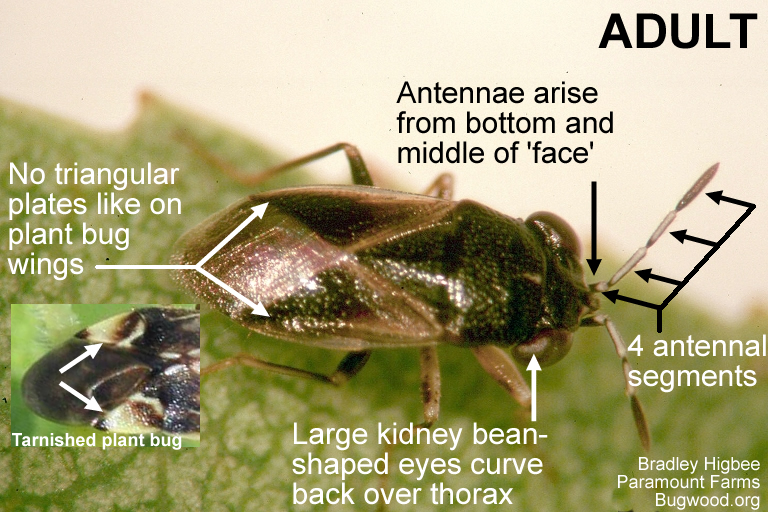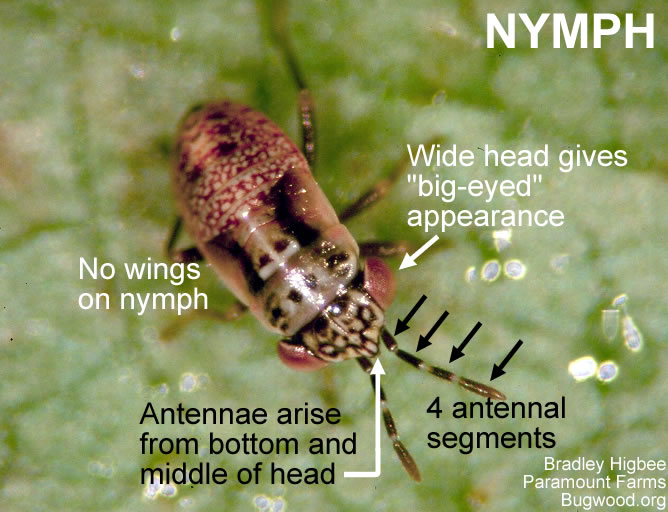Big-Eyed Bug
go.ncsu.edu/readext?562925
en Español / em Português
El inglés es el idioma de control de esta página. En la medida en que haya algún conflicto entre la traducción al inglés y la traducción, el inglés prevalece.
Al hacer clic en el enlace de traducción se activa un servicio de traducción gratuito para convertir la página al español. Al igual que con cualquier traducción por Internet, la conversión no es sensible al contexto y puede que no traduzca el texto en su significado original. NC State Extension no garantiza la exactitud del texto traducido. Por favor, tenga en cuenta que algunas aplicaciones y/o servicios pueden no funcionar como se espera cuando se traducen.
Português
Inglês é o idioma de controle desta página. Na medida que haja algum conflito entre o texto original em Inglês e a tradução, o Inglês prevalece.
Ao clicar no link de tradução, um serviço gratuito de tradução será ativado para converter a página para o Português. Como em qualquer tradução pela internet, a conversão não é sensivel ao contexto e pode não ocorrer a tradução para o significado orginal. O serviço de Extensão da Carolina do Norte (NC State Extension) não garante a exatidão do texto traduzido. Por favor, observe que algumas funções ou serviços podem não funcionar como esperado após a tradução.
English
English is the controlling language of this page. To the extent there is any conflict between the English text and the translation, English controls.
Clicking on the translation link activates a free translation service to convert the page to Spanish. As with any Internet translation, the conversion is not context-sensitive and may not translate the text to its original meaning. NC State Extension does not guarantee the accuracy of the translated text. Please note that some applications and/or services may not function as expected when translated.
Collapse ▲- Common Name: Big-Eyed Bug
- General Category: Beneficial Predator
- Taxonomic Classification: Hemiptera: Geocoridae
- Scientific Name: Geocoris species (several species)
Description
These small (approximately 1/4 inch) generalist predators are common in many different rural and urban landscapes. They prey on a variety of insect eggs, mites, aphids, and other small prey if the opportunity arises. In all stages of life they are active searching predators, but will occasionally feed on plants. Once these bugs have found a meal they insert their needle sharp beak, inject digestive enzymes, then suck up the partially digested insides of their prey. They are not known for biting people though.


Identification
Review the images for tips on how to identify these predators.
Adults
Small (approximately 1/4 inch); wide head that gives the big-eyed appearance; antennae arising close together in the lower middle of the “face”; lack of triangular plates (“cuneus”) on the front wings (compared to plant bugs); antennae have four segments, compared to five for stink bugs.
Nymphs
Smaller than adults, with the same body shape and features, but without wings, and often a lighter color.
Value in Pest Management
Geocoris predators are found in a variety of agricultural and landscape habitats where they contribute to natural control of a variety of small insects and other arthropods such as mites. They are common in turf grass where they feed on chinch bugs, sod webworms, and other pests. They are available commercially for management of aphids, caterpillars, and mites (see BIRC online Directory).
Origin and Distribution
Native, throughout eastern North America.


